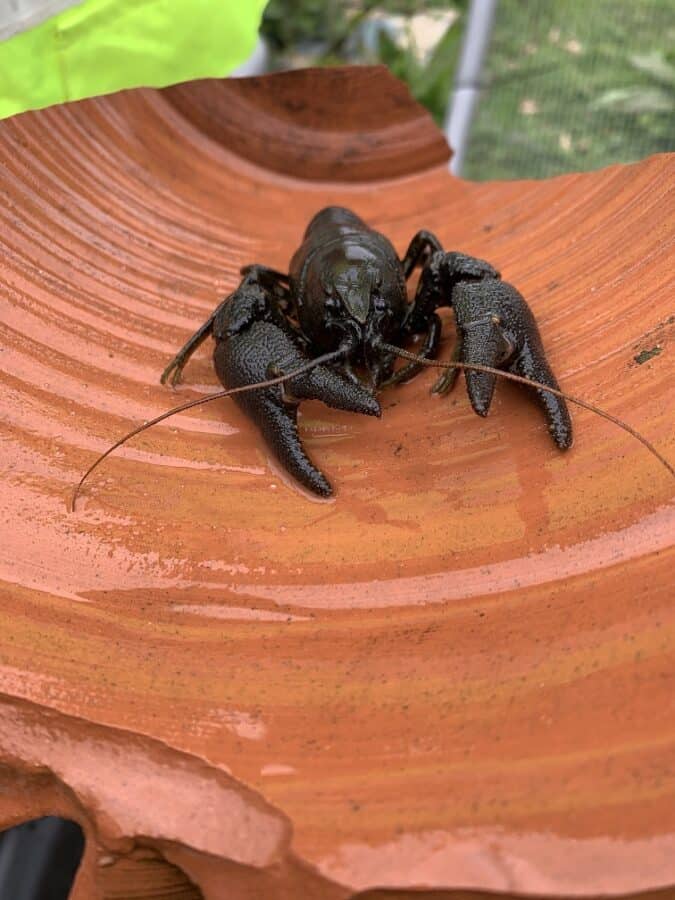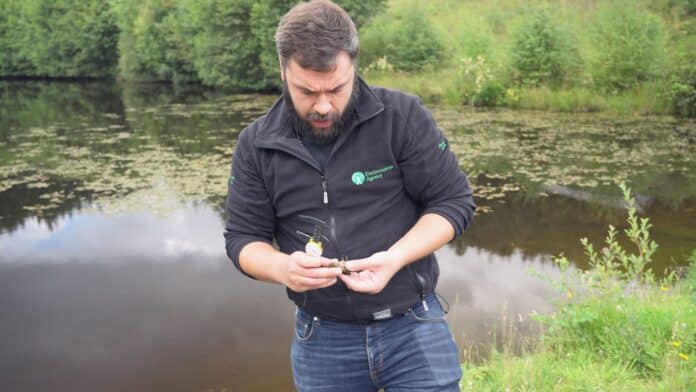A rescued population of endangered white clawed crayfish that were in danger of being wiped out in Pudsey have been moved to a safe haven where they can thrive and breed.
In June, Environment Agency specialists rescued the population from Pudsey Beck as part of a wider operation to safeguard the future of the native species in the River Aire catchment.
Those rescued, which included females carrying eggs, were kept for safekeeping in quarantine in tanks at the University of Leeds before passing health checks.
The crayfish – which now includes 300 babies born after the rescue took place – have been released into a Yorkshire Water-managed reservoir in North Yorkshire – known as an ‘ark’ site where they can live and breed safe from the threat of the invasive species.

The rescue and release is part of work by the Environment Agency and partners to carry out operations to rescue the native species after the invasive American Signal crayfish and a disease it carries – crayfish plague – moved through parts of the River Aire catchment.
Environment Agency fisheries officer Dan Chadwick said: “With so few populations of native crayfish remaining, we must act to preserve what we can.
“The endangered white clawed crayfish plays a vital role in keeping our waterways healthy and as a source of food for other native species, so it’s important we take action to ensure its survival.
“Those rescued from Pudsey Beck – including babies that have been born since the rescue – have a new biosecure home where they are safe from invasive signal crayfish and the plague they carry.
“We will continue to work with our partners to safeguard the future of the native species, including carrying out rescues and finding them new safe homes.”
Alison Dunn, Professor of Ecology in the School of Biology at the University of Leeds, who has been involved throughout the project, said: “Invasive species and diseases can have serious consequences on our environment such as loss of biodiversity and extinction of native species.
“If you’re out and about in the environment – such as walking your dog, working or fishing – please make sure to thoroughly check, clean and dry anything that’s been in contact with the water or riverbank, such as equipment and clothing. This will reduce the risk of spreading invasive species and diseases.”
If you see any crayfish, alive or dead, leave it where it is and report it immediately to the Environment Agency on 0800 807060. If possible, take close-up photos of the crayfish to help identify the species. It is illegal to handle or remove crayfish from the water without the correct licences.
Sponsored content



It would’ve been good if you’d shown comparison pictures of the native crayfish, and the invasive immigrant signal crayfish.